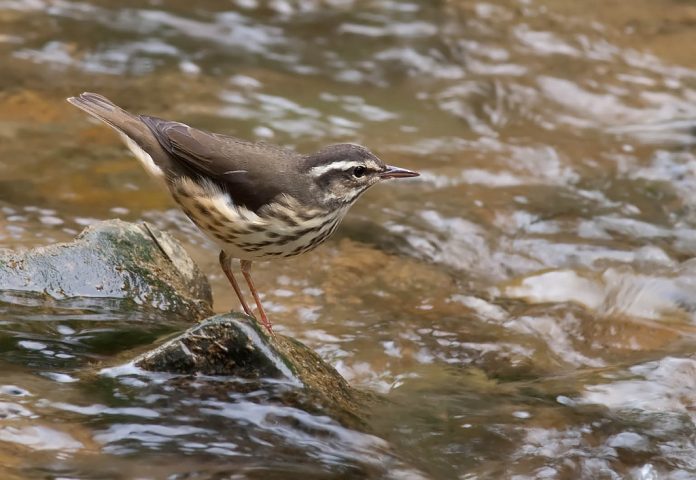
The Wildlife Society (an international organization of professionals trained in wildlife science, management, and conservation), recently released some short summaries of wildlife research that provide food for thought.
– When shale gas development began in 2008 in West Virginia, researchers from West Virginia University began studying its impact on birds in 2009. In a recent study published in The Condor: Ornithological Applications one research team studied the effect of the gas industry on the nesting success of Louisiana waterthrushes in their preferred streamside habitat.
Lead author Mack Frantz says, “Whatever happens to the streams, happens to these birds. They are bioindicators.” They serve as an ecological early warning system just like the proverbial “canaries in a coal mine.”
Success declined
Frantz’s team monitored waterthrush territories and nest success along 14 headwater streams. The study concluded that as shale gas development expanded on study sites, waterthrush nest success declined.
And as habitat quality deteriorated, waterthrush territory size increased. Poorer habitat required birds to travel farther from their nests to find food and other resources. That requires more energy and greater exposure to predators.
Frantz thinks the waterthrushes are being affected on multiple fronts. For example, habitat degradation seems to affect their preferred aquatic invertebrate prey. And waterthrushes may be bioaccumulating chemicals like barium and strontium, two heavy metals associated with the fracking process.
Constant noise
And then there are factors that have yet to be studied such as the constant noise from gas compressors, the bright lights that illuminate fracking sites at night, and the impacts of pipeline rights-of-way that destroy the continuity of large tracts of undisturbed forest.
– Long-term studies are unusual simply because they take so much time and personnel at wildlife agencies and universities turns over so quickly. But when long-term projects come to light, the results can surprise and fascinate.
A recent study in the herpetological journal Copeia, for example, reported on more than 35 years of research on American alligators. Phil Wilkinson, a biologist with the South Carolina Department of Natural Resources, began studying alligators in the 1970s.
Thomas Rainwater, a research scientist at Clemson University and second author of the paper, said, “To my knowledge, there’s no other crocodilian study like this in the world. It’s remarkable to have such a long-term dataset on the same population.”
Based on 35 years of data collected at the Tom Yawkey Wildlife Center in Georgetown, S.C., the research team compiled data from hundreds of alligators that had been captured, marked and measured.
Though biologists had long thought alligators grew throughout their lives, in 1993 Wilkinson noticed that some older alligators stopped growing. After reviewing decades of data, the team found that alligators reached their maximum length at 25 to 35 years.
Still breeding
The team also discovered that females continued to breed for many years after they stopped growing. One female estimated to be about 68 years old produced a fertile clutch of eggs in 2014.
This information is essential to manage hunted populations of alligators. Most alligator eggs, hatchlings, and juveniles succumb to predators, but after they attain adulthood they can live a long time.
It is essential to limit the harvest of adult alligators to maintain sustainable populations.
– Predators, especially large ones, usually have a bad reputation with people. A recent review of international research suggests that some predators and scavengers provide benefits to society. Christopher O’Bryan, a Ph.D. candidate at Australia’s University of Queensland and his colleagues, reviewed studies from around the world published over the last decade.
They found more than a dozen instances where predators and scavengers benefited human health or economics. For example, in North America bats save farmers billions of dollars in chemical costs by controlling insect populations.
Improving safety
O’Bryan also suggests that restoring mountain lions to the eastern U.S. could improve highway safety by reducing deer populations and thus reducing costly and sometimes deadly deer-vehicle collisions.
In Australia, dingoes prey on calves, but they also prey on kangaroos, which compete with cattle for pasture. In Indonesia, insect-eating birds and bats can boost coffee production by 30 percent.
And in Old World countries that lack garbage disposal systems, vultures provide the valuable service of devouring carcasses of both wild species and domestic livestock.












